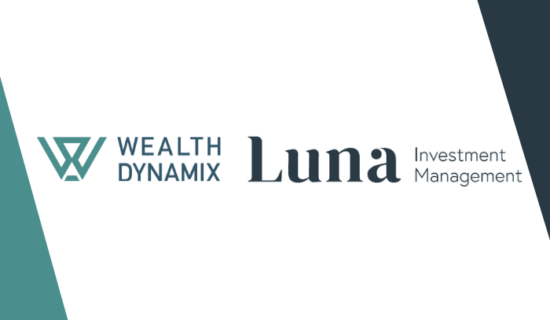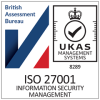The digitalisation of wealth management will continue and bring benefits to the sector. However the human element will not disappear in the foreseeable future as machines are unable to provide “empathy,” according to participants at a roundtable discussion hosted by wealth management IT firm Wealth Dynamix and PAM Insight, publishers of thewealthnet.
There was a general consensus amongst those that gathered at the London offices of EY for the discussion that the digitalisation of some aspects of wealth management was inevitable and had already begun. However, it was also agreed that for the traditional firms serving wealthy clients there was a spectrum which involved both digital and human interaction.
One area where this empathy is particularly important is in the delivery of bad news. David Howard, head of client service and proposition at Rathbone Brothers, used an analogy about the increased abilities of technology in the medical sector.
If you were told a computer was able to analyse your medical test results more accurately than a human you would probably opt for the digital approach.
However, that is not the same as saying you would want a computer to deliver the results. Most would opt for a human, as in the event of bad news, a human is able to empathise.
The same principle applies when considering portfolio performance. If there have been market issues a human is better able to reassure a client and explain what has been done in response to these circumstances.
David Howard
Head of client service & proposition at Rathbone Brothers
He added that people value highly the relationship with their adviser, especially in difficult times. He said some individuals may tolerate lower performance for the sake of a strong relationship. This cannot be offered by a purely digital service.
Dominic Snell, head of consulting at Wealth Dynamix, added that machines are unable to draw out “any deeply held anxieties, goals or beliefs” that a human can pick up on when building a relationship with a client and that a human adviser can “draw on their own experience to offer relevant advice”.
Much focus has been placed on so-called “robo-advice” and the digitalisation of investment services.
Concerns were raised as to how a purely digital investment service could be made to be a successful business. This is especially true for a start-up where the high costs of acquiring clients make profitability a difficult situation to reach.
For established wealth management brands this may be easier. However, the pure ‘robo’ services do not tend to have wide appeal amongst the current set of wealthy and very wealthy clients. Instead participants felt ‘robo advice’ may have a place serving the mass affluent market and in closing the “advice gap.”
However, Paul Fletcher, a partner at London & Capital, also raised the point that in the UK the idea of investing through liquid portfolios is nowhere near as entrenched an idea as investing in property. Convincing mass affluent individuals to consider liquid investment as a proxy to property is another barrier ‘robo advisers’ will need to overcome.

Steve Dyson, director at Investment & Wealth Management Consultants, said that the “closing of the advice gap was the starting point for the development of robo-advice in the UK.” However, he added that “some firms are starting to emerge that are focused higher up the wealth chain.” He cited Netwealth as one such firm that was seeking the same kind of wealthy client as the traditional wealth management firms.
Also as the level of wealth of an individual grows, their affairs tend to become more complex. At the moment a purely digital service would struggle to understand the complexity and create a suitable solution, the participants felt.
What a purely digital service run by a traditional wealth management may be able to do is capture clients further down the wealth chain. Once their level of wealth has increased to a sufficient level the firm can contact the client to offer additional services and begin the human relationship.
Of course, digitalisation of the wealth management sector is not just about robo-advice. There are many elements that can be digitalised and many digital tools that can be given to clients.
One element that Andrew Butler-Cassar, head of private office at Investec, believes will be ubiquitous is an aggregation tool.
Wealthy clients usually have accounts and investments with a number of different institutions. An aggregation tool that allows them to see all their affairs, and not just those of the firm that provides the tool, will become something most offer, I believe.
Andrew Butler-Cassar
Head of private office at Investec
Client demand may be ahead of what the sector can currently offer. Roopalee Dave, senior manager in EY’s wealth and asset management department, said that research by EY suggested that there is an awareness and desire for digital wealth management services amongst “all wealth segments and all ages.”
Although clients of all ages are becoming more comfortable with digital services, there was an agreement that one of the major trend driving the digitalisation of wealth management was the need to cater for future generations of clients.
To ensure that firms are able to meet these digital needs of clients, it is important that individuals working at them embrace the change.
“You can change the systems but what about the people?” asked Verona Smith, head of platform of Seven Investment Management. “The change has to come from the top down. The operational efficiencies and the ability to decrease risk need to be demonstrated to ensure all client facing staff become digital converts.”
Homy Dayani-Fard, director, strategy and customer at EY, also looked outside the wealth management sector to see the wider trends of digitalisation. He highlighted that digital creates the opportunity to “bring together different aspects of life” into one place.
In addition, the way in which wealth is created has evolved, Mr Butler-Cassar added. It is now possible to build a successful digital business without the need for the same level of initial spend and overhead that was required for non-digital businesses.

Despite this, additional funding is still usually required to invest in a successful business for growth. This can often involve lending decisions that are not purely based on the hard and fast rules which a digital service would use. Mr Butler-Cassar suggested that human interaction will still be needed for these, even if the individual then uses a digital wealth management service as their wealth begins to build.
Whatever shape it takes, it is clear that those taking part in the discussion can see the benefits of blending digital and face-to-face engagement with clients, if the right level and approach can be found.
“It’s a spectrum,” Ms Dave. “It is about finding the right mix of digital and human interaction that works for your clients and your business.”





